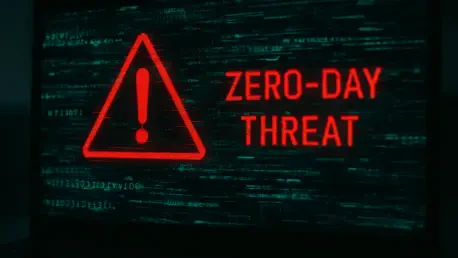In an era where digital infrastructure underpins nearly every facet of business operations, the discovery of a critical zero-day vulnerability in a widely used content management system like SiteCore sends shockwaves through the cybersecurity community, exposing organizations to severe risks. This flaw, affecting the SiteCore Experience Manager and SiteCore Experience Platform, heightens the potential for remote code execution, which could compromise sensitive data and systems. Unveiled by security researchers from Google and detailed by Mandiant Threat Defense, the vulnerability underscores a chilling reality: even robust platforms can harbor hidden weaknesses that threat actors are quick to exploit. With attackers leveraging outdated configuration practices, this incident serves as a stark reminder of the ever-evolving nature of cyber threats. The urgency to address such flaws cannot be overstated, as the consequences of inaction could be catastrophic for businesses relying on these tools for their digital presence.
Understanding the Vulnerability
Unpacking the Technical Flaw
The zero-day vulnerability in SiteCore’s CMS products, identified as CVE-2025-53690, originates from a ViewState deserialization issue that allows attackers to execute remote code by exploiting exposed ASP.NET machine keys. These keys, once published in deployment guides dating back several years, represent a significant misstep in secure configuration practices. Mandiant researchers have highlighted that the sophistication of the attacker’s approach indicates a deep understanding of the compromised system, even if the full attack lifecycle remains partially obscured. This flaw is not merely a technical oversight but a systemic issue tied to how sensitive information is handled and protected. Organizations using affected SiteCore products face a heightened risk, as the public availability of these keys has provided a clear entry point for malicious actors. The severity of this vulnerability lies in its potential to grant unauthorized access to critical systems, making it a prime target for exploitation in the wild.
Broader Implications of Public Exposure
Beyond the technical specifics, the incident reveals a troubling trend in cybersecurity where publicly accessible documentation becomes a weapon in the hands of adversaries. Security experts from VulnCheck have pointed out that the root of this vulnerability extends to the insecure use of static machine keys, compounded by their exposure in public domains. This situation exemplifies how threat actors meticulously scour available resources to identify weaknesses in widely adopted platforms like SiteCore. The broader implication is a call for heightened scrutiny over what information vendors release and how users implement configurations. Such exposures are not isolated incidents but part of a recurring pattern where convenience or oversight in documentation can lead to significant security lapses. As cyber threats grow more sophisticated, the need for a balanced approach to information sharing becomes paramount to prevent similar vulnerabilities from being exploited on a larger scale.
Responding to the Threat
Immediate Actions and Official Guidance
In response to the discovery of CVE-2025-53690, SiteCore issued a security bulletin urging users to apply patches without delay and to thoroughly inspect their environments for any signs of compromise. This swift action was reinforced by the Cybersecurity and Infrastructure Security Agency (CISA), which added the vulnerability to its Known Exploited Vulnerabilities catalog, signaling a high likelihood of active exploitation. The consensus among security entities underscores the critical nature of the flaw and the immediate danger it poses to organizations. Users of SiteCore products are advised to prioritize updates and conduct detailed audits to detect any unauthorized access or anomalies in their systems. The collaborative effort between SiteCore and CISA reflects a shared commitment to mitigating the risks posed by this zero-day threat. However, the responsibility also falls on individual organizations to act decisively, ensuring that their digital assets remain secure against potential attacks stemming from this vulnerability.
Long-Term Strategies for Prevention
Looking beyond immediate remediation, this incident with SiteCore products highlights the need for long-term strategies to prevent similar zero-day threats from emerging. Organizations must adopt a proactive stance, regularly reviewing and updating their software configurations to eliminate outdated or insecure practices. Vendors, on the other hand, should sanitize public documentation to avoid exposing sensitive details that could be exploited. The cybersecurity community has emphasized that secure deployment practices are not a one-time effort but an ongoing process requiring vigilance and adaptation. Lessons from this vulnerability suggest that fostering a culture of security awareness within organizations can significantly reduce risks. By integrating best practices into their operational frameworks and staying informed about emerging threats, businesses can better safeguard their systems. This incident serves as a reminder that balancing accessibility of information with robust security measures is essential to protect against future exploits.









